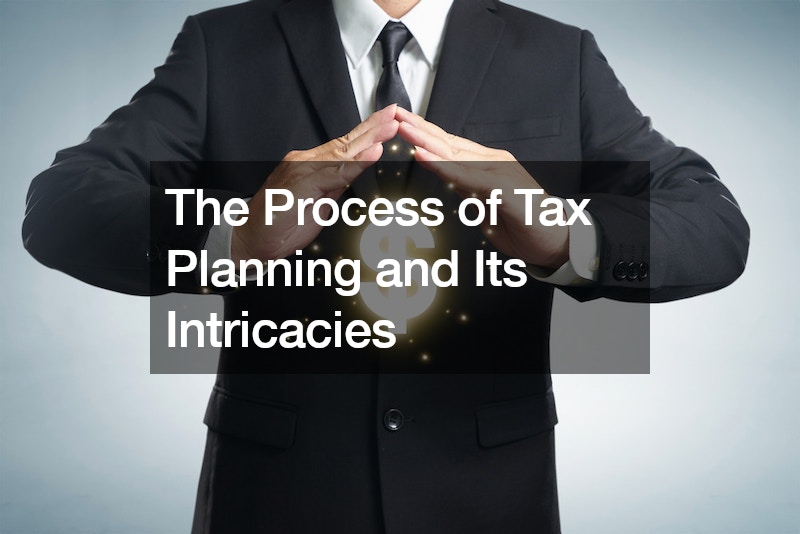

Embarking on the intricate journey of tax planning involves navigating through a myriad of financial data, historical records, and client goals. In this exploration, we delve into the indispensable role of tax management tools and how they significantly contribute to streamlining the entire tax planning process.
1. Centralized Data Organization
One of the primary challenges in tax planning is the vast array of financial information scattered across different platforms. Tax management tools act as centralized repositories, aggregating data from prior tax returns, current financial situations, personal goals, business structures, real estate holdings, investments, and retirement accounts.
This consolidation simplifies the consultant’s task by providing a comprehensive overview of the client’s financial landscape in one accessible location.
With the ability to collect and organize data from multiple sources, tax management tools eliminate the need for consultants to sift through disparate documents and accounts. This not only saves time but also reduces the likelihood of overlooking critical information that could impact the tax planning strategy.
2. Efficient Collaboration and Communication
Effective collaboration between tax consultants and clients is crucial for successful tax planning. Tax management tools facilitate seamless communication and collaboration by allowing real-time sharing of information. This ensures that both parties are on the same page throughout the planning process, enhancing the efficiency of decision-making and strategy implementation.
Consultants can use these tools to request specific documents or information directly from clients, who can then upload the necessary files securely. This interactive communication streamlines the exchange of information, creating a collaborative environment that fosters a deeper understanding of the client’s financial goals and challenges.
3. Goal Tracking and Visualization
Tax planning often revolves around aligning financial strategies with client goals. Tax management tools come equipped with features that enable goal tracking and visualization. Whether it’s tracking progress towards retirement savings or monitoring real estate investment objectives, these tools provide dynamic visualizations that aid both consultants and clients in making informed decisions.
Visualization tools within tax management applications allow clients to see the projected outcomes of different tax strategies in alignment with their specific goals. This not only simplifies the decision-making process but also empowers clients to actively participate in shaping their financial future.
4. Forecasting and Scenario Analysis
Understanding the potential outcomes of different tax strategies is paramount in the planning process. Tax management tools offer forecasting capabilities, allowing consultants to model various scenarios based on proposed strategies. This feature empowers clients to make informed decisions by visualizing the potential impact of each strategy on their adjusted gross income, taxable income, and overall financial goals.
Scenario analysis becomes a dynamic and interactive process with the aid of tax management tools. Consultants can present clients with multiple scenarios, adjusting variables to showcase the potential financial implications of each strategy. This forward-looking approach enables clients to choose the most suitable path based on their risk tolerance, financial objectives, and future plans.
5. Real-Time Implementation Monitoring
As tax strategies move from planning to implementation, monitoring the real-time progress is crucial. Tax management tools provide features for tracking the implementation of planned strategies, ensuring that each measure seamlessly translates into action. This real-time monitoring enhances accountability and allows for prompt adjustments if needed.
Through real-time implementation monitoring, both consultants and clients can track the execution of recommended strategies. This feature not only ensures that the agreed-upon actions are taking place but also provides insights into any deviations or unforeseen challenges. The ability to address issues promptly contributes to the overall success of the tax planning process.
6. Post-Implementation Review and Adjustment
Following the implementation phase, tax management tools continue to play a pivotal role in post-implementation review. These tools facilitate a comprehensive analysis of the effectiveness of chosen measures. If adjustments are necessary, consultants and clients can collaboratively make informed decisions based on the real-time data provided by the tax management tool.
Post-implementation reviews are simplified and more thorough with the assistance of tax management applications. Consultants can compare the actual outcomes with the initially projected results, identifying areas of success and areas that may require modification. This iterative process ensures that tax strategies remain aligned with the client’s evolving financial situation.
7. Compliance and Reporting
Tax management tools contribute significantly to compliance by keeping track of deadlines, regulatory changes, and reporting requirements. Automated features within these tools ensure that clients remain compliant with tax laws and regulations, reducing the risk of oversights and penalties.
Compliance is a central aspect of tax planning, and tax management tools serve as vigilant assistants in this regard. By automating compliance checks and providing timely reminders, these tools empower consultants to proactively address any potential issues before they escalate. This proactive approach fosters a culture of compliance and risk mitigation.
8. Enhanced Data Security
The sensitive nature of financial data underscores the importance of robust security measures. Tax management tools prioritize data security, employing encryption and secure storage to protect clients’ confidential information. This not only ensures compliance with data protection regulations but also fosters trust between clients and tax consultants.
Enhanced data security measures within tax management applications contribute to building a robust foundation of trust between clients and consultants. Knowing that their financial information is stored and transmitted securely encourages clients to share the necessary details for comprehensive tax planning. This trust forms the basis for a successful, collaborative, and ongoing relationship.
Conclusion
In conclusion, tax management tools revolutionize the tax planning process by offering centralized data organization, efficient collaboration, goal tracking, forecasting, real-time monitoring, and post-implementation review. These tools not only simplify complex financial tasks but also enhance the overall client experience by providing transparency, security, and dynamic insights. As technology continues to advance, the role of tax management tools in shaping the future of tax planning remains pivotal.
.



